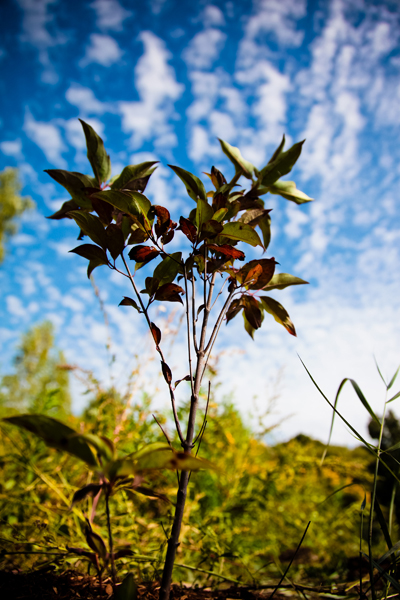Sure, they can be easy to forget when their bare branches don’t offer much. While they can be a spectacular sight after a snowfall, the impression quickly fades. I’m quickly back to counting the days until spring. But with our recent mild winters, it can be hard to figure out what to wear, much less how much salt to throw down on our streets - and that is a problem.
According to Carly Weeks piece last month in the Globe and Mail, the average Canadian “consumes more than double the recommended amount.” But compare that with Toronto's urban forest - which absorbs mountains of salt each year – up to 150,000 tonnes from city trucks alone. As groups like the Canadian Medical Association, the Heart and Stroke Foundation, Hypertension Canada and the Canadian Stroke Network call on Mr. Harper to take action on plates, we ought to call out for action on our streets.
Trees' moisture is drawn out by the salt spray of passing vehicles. Their roots are damaged as salt water is absorbed into the ground, affecting microbes and altering the nutrient makeup of the soil. Imagine waking up after a long sleep to find your bedside supply of water filled with salt.
When our cities go through this thaw-freeze-and-repeat, the excessive salt on our streets and walkways - put down by concerned store owners and citizens - gets carried along paths and ravines down to the lakes and rivers we hold so dear. It soaks into the ground and hurts the very plants we are waiting to enjoy. Obviously this is a mistake that needs amending.

After all, who doesn’t want to live in a green city? As the weather changes, take note of the trees near the sidewalks, driveways, and front steps. Remember them. Evergreens tend to be particularly sensitive, but consecutive years of salt damage can weaken even our toughest trees and vegetation. Like us, all living, breathing, things require a fine balance to stay healthy. These urban fixtures are no different.
Our educational tree tours touch on many of the urban stresses that our trees face, and our Tree Tender Volunteer Training Program offers hands on training for ways you to help your neighbourhood thrive. My own way of seeing has been shaped in part by the arborists, experts and instructors that lead these uniquely catered programs.
When it snows, pick up a good shovel rather than waiting with a bag of salt. Get a work out, help work off some of that sodium in your own diet and help your neighbourhood trees. Use environmentally-friendly de-icers, and apply it before any ice has time to form. You’ll also be glad to know that the City of Toronto is aware of the risks of road salt to the environment and that they are working to find the right balance as well.

We all want to make our sidewalks safer. But think of the dogs' paws and trees' roots - even the grey infrastructure that gets eaten away! On behalf of the things that can't speak for themselves, we could all stand to make a conscious choice about how much we really need. As the old axiom goes, when the weather changes, people forget how to drive. We should probably stop overreacting at the first sight of snowflakes as far as salt goes too. Think of it as a first step towards getting our urban forest on a healthier diet.
